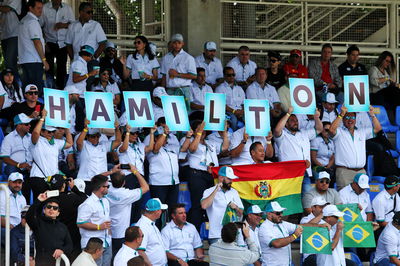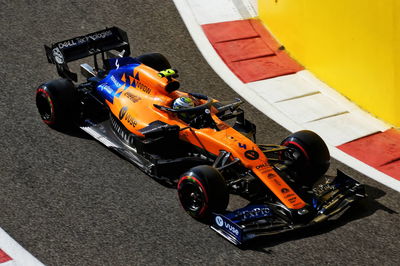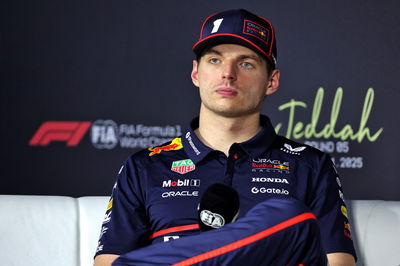How Netflix helped create the age of F1 ‘stans’
As Formula 1’s off-season rumbles on and the countdown to the opening round in Melbourne continues, millions of fans all over the world will be finding ways to get their racing fix.
Short of sampling some alternative racing series that will continue through the winter, such as Formula E, WRC and IMSA, many F1 fans will flock to Netflix to rewatch the Drive to Survive series that premiered on the eve of the 2019 season.
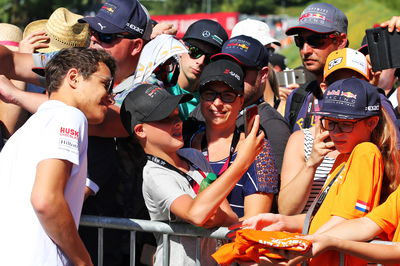
As Formula 1’s off-season rumbles on and the countdown to the opening round in Melbourne continues, millions of fans all over the world will be finding ways to get their racing fix.
Short of sampling some alternative racing series that will continue through the winter, such as Formula E, WRC and IMSA, many F1 fans will flock to Netflix to rewatch the Drive to Survive series that premiered on the eve of the 2019 season.
Drive to Survive met great acclaim through the F1 world, shining a light on the more human side of the often closed-off sport thanks to its more candid, behind-the-scenes style. But it was all part of a wider strategy from F1 to attract a younger demographic of fan, opening doors that had been closed off in the past.
Since completing its takeover of F1 in January 2017, Liberty Media has been clear in its ambition to make the sport more attractive to a younger audience. It had to build that up from nothing thanks to former CEO Bernie Ecclestone’s focus on fans who could afford to buy a Rolex and his claim he was “not interested in tweeting, Facebook and whatever this nonsense is” – but has done so impressively over the last three years.
F1’s research and analytics director, Matt Roberts, revealed in a recent AMA on Reddit that F1 has “the greatest proportion of under 25s of all global sports leagues, with the exception of the NBA”.
He added: “We've done a lot of work looking at who is becoming new fans. 62 percent of new fans are under 35. Things like Netflix, Esports, F1 TV Pro, etc. have been extremely helpful at growing those audiences. And we're proud of that!”
Another big area of change has been F1’s approach to the “nonsense” Ecclestone referred to: social media. Its accounts are now relevant and engaging, playing around with current memes and pop culture references that would never have graced its channels in the past.
Such relevance is more important than ever in the age of ‘stans’. Defined by Merriam-Webster as “an extremely or excessively enthusiastic and devoted fan”, the stan takes its name from the character Stan in Eminem’s song of the same name. While stans may have been more prevalent in music, movie and TV culture in the past, they have now shifted into sports – including Formula 1.
A lot of this can be attributed to the success and, more importantly, the availability of the Netflix series. F1 turned down a bigger financial offer from Amazon in favour of working with Netflix, knowing it could attract a wider audience (given many Amazon Prime subscribers would be more interested in the one-day delivery service than the video offerings). Netflix did a lot of promotion around Drive to Survive, meaning even non-F1 fans would be able to stumble across it.
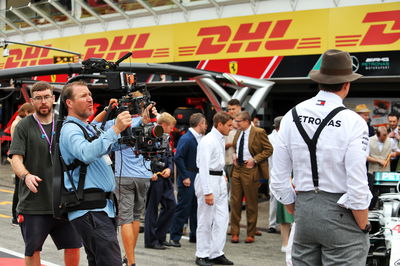
And that’s precisely what they did. “Many people come up to me at races and in the streets and say that they weren't F1 fans, but they are now because of the series,” said Roberts in the AMA. “I think we understood that doing something like this that elevates new heroes in the sport has raised interest in the casual F1 fans.”
That was the true magic and success of Drive to Survive. It didn’t focus on the on-track action, the overtakes or the battle for the championship. Instead, it made the drivers the true stars. It humanised the heroes of the sport. It meant that newcomers to F1 became fans of the people first, and the sport second. They were taken to Carlos Sainz’s house. They met Daniel Ricciardo’s parents. They got to know the person behind the visor.
And that approach has carried over to a lot of F1’s digital offerings in 2019. Lando Norris, George Russell and Alexander Albon may not have featured in Season 1 of Drive to Survive, yet all three starred across F1’s digital channels last year, the best offering coming in their Rookie of the Year debate at the end of the season. The bromance between Norris and Carlos Sainz has also been a big win for the sport, particularly as both are so engaged with social media and their own audiences.
Diehard F1 fans are nothing new. Lewis Hamilton, Sebastian Vettel and Kimi Raikkonen have all enjoyed huge followings through their careers. But most drivers on the grid now have considerable fanbases to tap into thanks to their ability to show their personality via social media, and, more crucially, the spotlight placed on them off-track through the Netflix series.
The age of the F1 stan is only a good thing for the sport. It shows the changes made since Liberty’s takeover have been largely positive, achieving the goal of increasing its young fanbase. It is also helping to create a foundation that will hopefully last a lifetime.
Such a change had to happen at some point. Gone are the days where F1 fans can be made by stumbling across a race on one of the five channels on their TV, or they can buy a cheap ticket to see a race first-hand. The barriers to watching the sport have become greater – but now there are new ways to get around them and make F1 more accessible.
Season 2 of Drive to Survive does not yet have a release date, but can be expected in early March if Season 1’s timing is anything to go by.
It will be the perfect moment to stir the excitement before the lights go out in Melbourne and herald the start of a new season the recent brood of F1 stans will have been more eager for than anyone.
